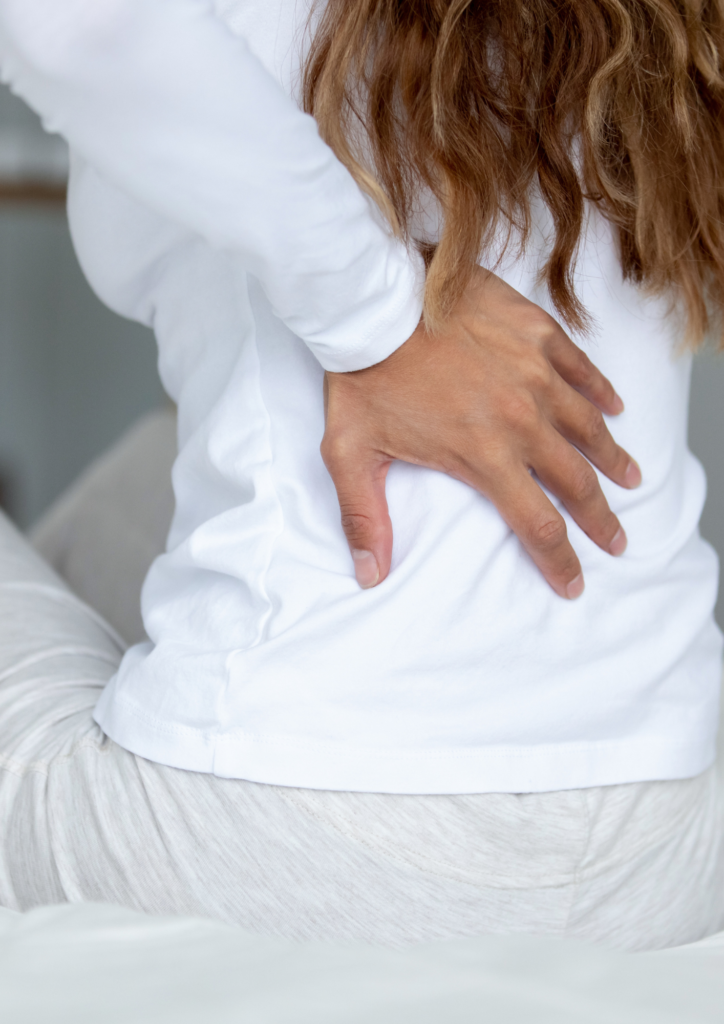
Suffering with Low back Pain?
Back pain is often the result of years of slumped spines, weak muscles in both our back and abdominals, and just general wear and tear to our body’s shock absorber-our spine. The most common source of back pain for most is muscular-skeletal strain. This type of strain is typical in cheerleading due to poor body mechanics and improper stunt technique.
There are several actions to take to minimize the pain and initiate recovery.
-
Move more!
Avoid sitting for longer than a half-hour period without a break. This may be difficult to do during work hours, so move at every available opportunity…go get a drink, walk to the restroom, take a walk or light workout over the lunch hour, etc.
-
Do not bend or twist from the waist.
The ligament muscle support in the lumbar region on the side that you twist toward collapses giving minimal support in the injured region. When lifting an object (or person) bend your knees and keep the object close to your chest.
- Keep core muscles tight during activity (especially weight bearing or lifting) but make sure that you do not hold your breath while doing so.
-
Aerobic activity
Aerobic activity assists in bringing nutrients to the structures of the spine. Discs have poor blood supply and rely heavily on aerobic activity to circulate nutrients. incorporate a minimum of 30-40 minutes three times per week. Walking, biking, and elliptical training are excellent non-impact activities to utilize.
-
Flexibility of the spine and lower extremity is essential for minimizing risk of low back pain
Stretching the hamstrings allows the pelvis to rotate and takes pressure off of the lower lumbar spine. Tight hamstrings lock the pelvis and most of the stress transmits to the lumbar spine. During injury, an individual will likely limit flexion (bending forward) so once the pain is stabilized, it’s essential to restore this movement. I have enclosed flexibility exercises to incorporate into your rehabilitation.
-
Strengthening of the legs and trunk muscles (abs and spine extensors)
Overall core strength is essential. Exercises that require the trunk to maintain a stable position while strengthening the upper and lower body should also be included.
-
Treatment of pain through passive modalities
These forms of treatment should be used initially, however, the goal is to shift the focus on active therapy as previously indicated as the therapy progressed and pain declines. The modalities used most for athletes at home is the application of heat and ice. The two may be alternated and are generally applied for 10-20 minutes once every few hours.
-
Anti-inflammatory medications may relieve pain
Take as indicated for brief periods of time.
- Topical remedies may provide some relief but there are only a few that actually can reduce inflammation (one example is Voltarin which is over-the-counter).
-
Awareness of postural discrepancies
Postural problems are the number one cause of back pain. Misalignment of the spine or “slumping” causes a myriad of muscular-skeletal problems. It’s essential to get a postural assessment from a qualified professional and take the necessary means to change the way you sit and stand. Years of poor posture are hard to rectify but with attentiveness to the problem, you will significantly lower your risk of low back pain and other
-
Never strength train without a full warm-up and never skip stretch after!!
-
Be careful not to overpack book bags, travel bags, purses etc., and always alternate the side that you carry them on.